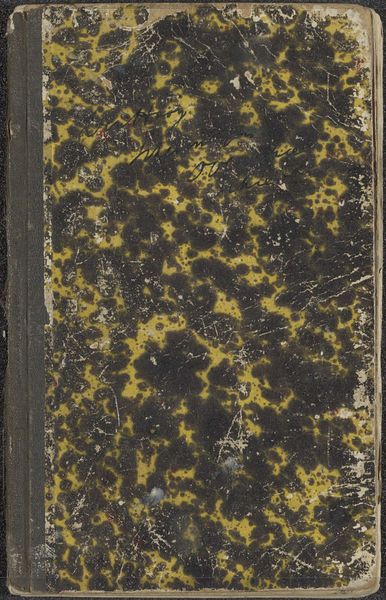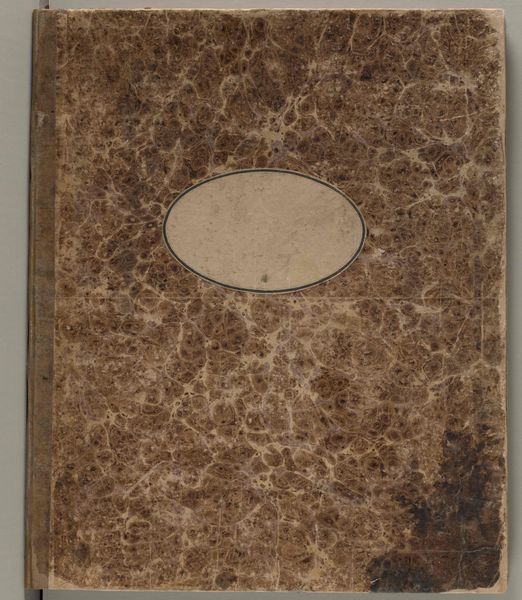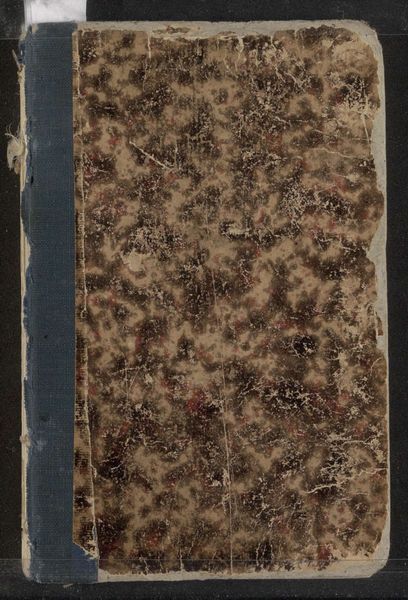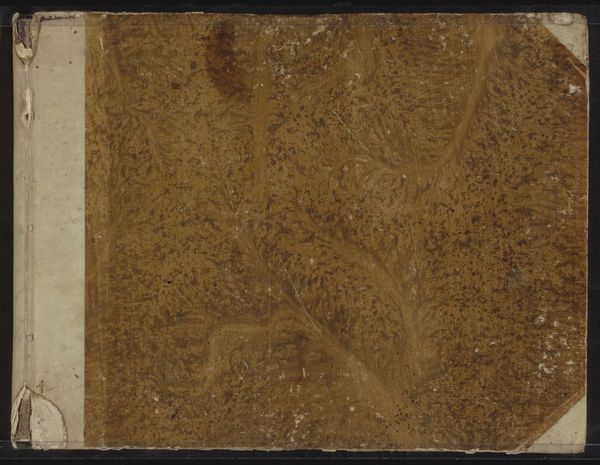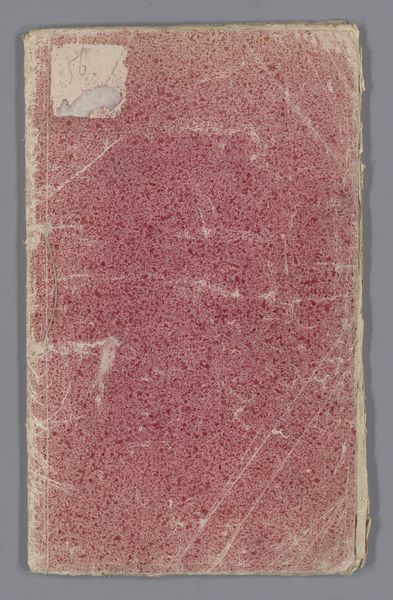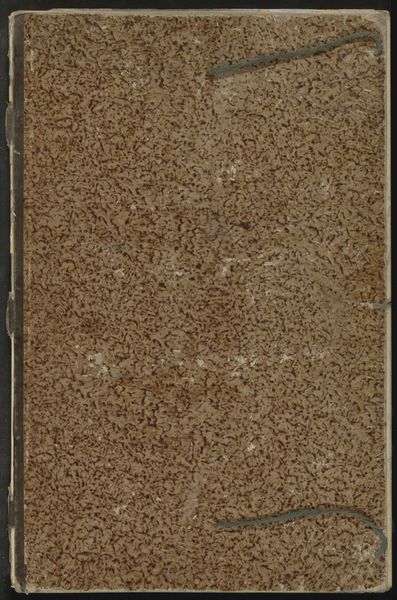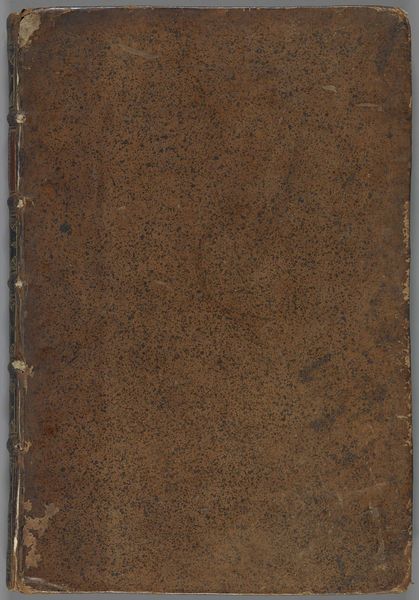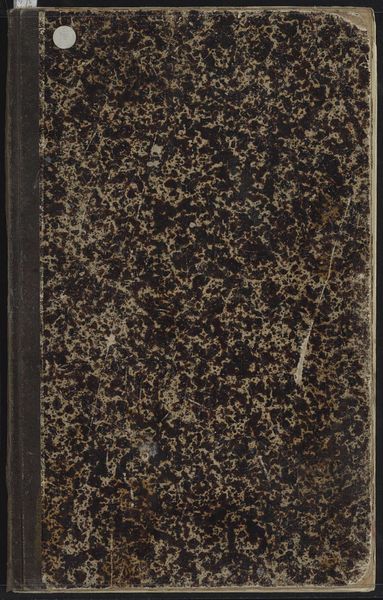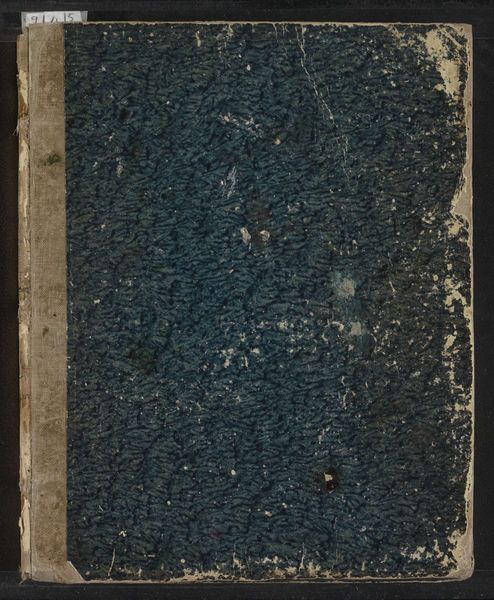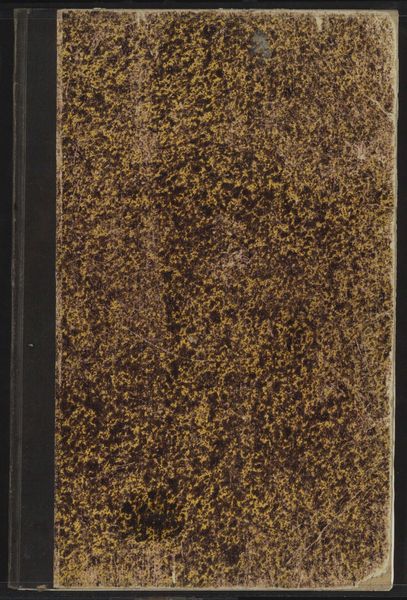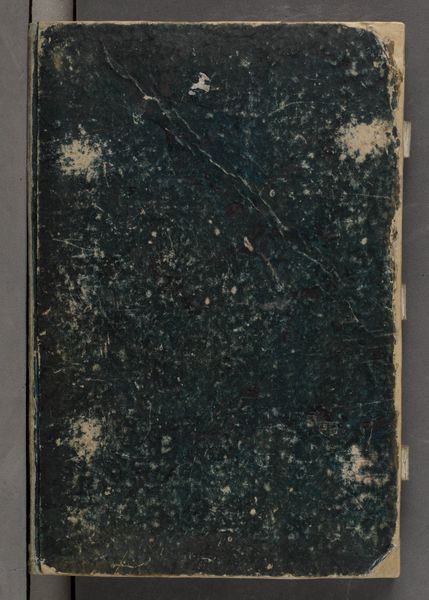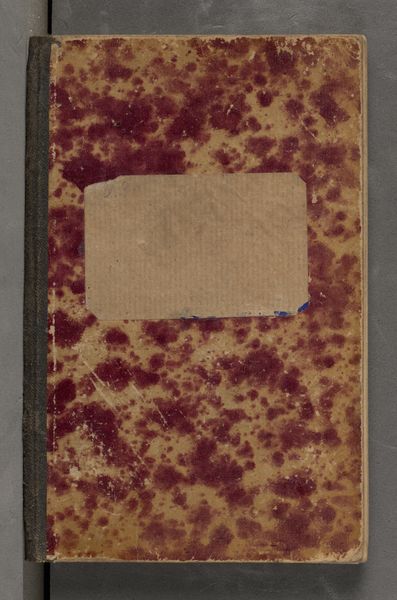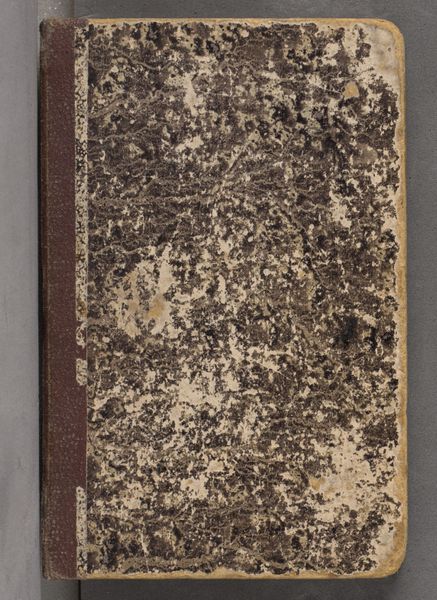
mixed-media, paper, architecture
mixed-media
dutch-golden-age
impressionism
sculpture
paper
mixed media
watercolor
architecture
Dimensions: height 332 mm, width 213 mm, thickness 12 mm, width 426 mm
Copyright: Rijks Museum: Open Domain
Curator: Here we have "Sketchbook with 38 Sheets," created around 1890 by Carel Adolph Lion Cachet. At first glance, Editor, what do you make of it? Editor: It looks worn, doesn't it? As if it has been frequently handled. The torn covering reveals layers – a literal unpeeling of time and usage. I immediately start wondering about how this object was used. Curator: Indeed. We can observe that Cachet utilized mixed media on paper for this work. Notice how the patterns on the cover interplay with the absent portions, constructing a visual rhetoric around notions of exposure. It’s a formal dance between decay and intention. Editor: Right. That interplay, I'd argue, raises questions about access to materials at the time, and how an artist re-purposes an old sketchbook. What were the economic considerations? The social implications of using "less-than-perfect" stock? The artist's hand, not only in creation, but also in salvaging. Curator: Such pragmatic origins don’t necessarily negate aesthetic contemplation. Consider the distribution of tonal values across the marbled paper – how browns merge into umber shadows—creating depth on a flattened plane, and all framed by the muted greens on the edges. Semiotically, the decaying nature adds to its richness. Editor: Of course. The decomposition is meaningful. What kind of studio was he working in? The remnants of glue and paper evoke for me the artist's physical labour and allude to the community around the artist: were there studio assistants? Where did Cachet acquire the materials? How was art distributed? Curator: Well, beyond my expertise, but a compelling suggestion that looking at it as a material object in history opens many possibilities. I initially wanted to think of it solely through line and colour and composition. Editor: Agreed! Perhaps by engaging with the process and historical situation that birthed "Sketchbook," we deepen our understanding and create a fuller context to examine the artist's skill and choices, regardless of how that skill and those choices came to be. Curator: Absolutely. Considering both, we gain profound insight into how we approach, comprehend, and honour this artefact. Thank you. Editor: Thanks! Thinking about art as product and object offers exciting opportunities to reconsider our preconceptions.
Comments
No comments
Be the first to comment and join the conversation on the ultimate creative platform.
